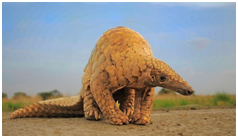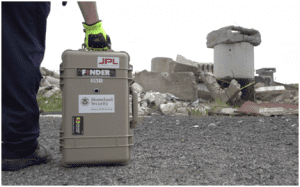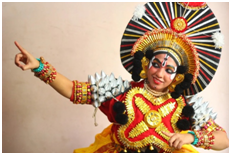THE CONTEXT: Recently, the Uttar Pradesh government has set up a five-member commission to provide reservation to Other Backward Castes (OBCs) on the basis of the triple test. However, it has now ordered the polls to take place without OBC reservation. This came in response to Allahabad High Court Judgement, where it has struck down quota for OBCs in urban local body polls. This article analyses the triple test formula given by the Supreme Court, the background of OBC reservations, and the measures that need to be taken to resolve the issue.
ANALYSIS OF TRIPLE TEST
The three tests that Supreme Court lays are:
(1) To set up a dedicated Commission to conduct a rigorous empirical inquiry into the nature and implications of the Backwardness qua local bodies, within the state.
(2) To specify the proportion of reservations required to be provisioned local body wise in light of recommendations of the Commission, so as not to fall foul of overbreadth.
(3) In any case such reservation shall not exceed an aggregate of 50 per cent of the total seats reserved in favor of SCs/STs/OBCs taken together.
FIRST TEST
- With regard to the first test, there is a criteria to set up a dedicated Commission for conducting empirical enquiry to collect data on the conditions (economic and educational), nature and impact of Backwardness of OBCs in local elections in the state.
- However, most often these inquiries are not adequate enough and do not provide much results as they are often affected by executive interference.
- For example, credibility of the recommendations of numerous commissions in India such as Nanavati Commission, W.C. Banerjee Commission, Ranganath Mishra Commission, etc have been publicly questioned.
- Since there is no mechanism to ensure reliability of such commissions’ reports, there is a growing trend to rely on the research published in peer-reviewed journals. There is a need for such a commission to be competent enough to take such studies.
SECOND TEST
- With regard to the second test, there is a provision of providing reservation on a proportional basis in municipal and municipal elections by state government.
- There is a positive impact of reservation in local bodies as there is stigmatization faced by the unprivileged section of OBC.
- In a local body, space for providing such reservation in favour of OBCs could only be notified upon fulfilling the preconditions of the triple test and with proper inquiry into the nature and implications of Backwardness by an independent commission about the imperativeness of such reservation.
- However, “In Vikas Kishanrao Gawali, the Supreme Court has also outlined that such inquiry into the nature and implications of backwardness cannot be a static arrangement; rather, it must be reviewed from time to time so as not to violate the principle of over-breadth of such reservation.”
THIRD TEST
- With regard to the third test, breaching the total reservation limit of 50% is not allowed; despite this many communities have sought separate reservations at the state and central levels across India.
- For example, the Supreme Court citing Indira Sawhney’s Judgment put a stay on Madhya Pradesh’s endeavor to establish 27% reservation for OBCs in local body polls and Tamil Nadu’s 10.5% reservation to Vanniyars within the existing quota for OBCs. This law was later struck down as unconstitutional by the Supreme Court.
- However, Since the inclusion of the 10-per-cent EWS quota, most States have breached the 50-per-cent cap on reservations. Topping the list is Tamil Nadu (69 per cent), followed by Chhattisgarh (69 per cent), Maharashtra (62 per cent), Andhra Pradesh (60 per cent), Bihar (60 per cent) etc.
- Recently, the call for reconsidering the 50-per-cent cap has been growing since several States have been demanding a caste census to determine the actual population of SCs, STs, OBCs, and minorities.
BACKGROUND OF TRIPLE TEST
In 2010, a five-judge bench constitution bench in Dr Krishnamurthy v Union of India was set up where it dwelt on the issue of reservation in local bodies. Here, Supreme Court had interpreted Article 243D (6) and Article 243T (6), which permit reservation by enactment of law for backward classes in Panchayats and municipal bodies, respectively.Though reservation to local bodies is permissible, the top court declared that the same is subject to empirical finding of Backwardness in relation to local bodies as fulfilled through the triple tests.
In 2017, Uttar Pradesh government issued orders to conduct a rapid survey for OBC reservation and based on that seats were reserved in proportion to the population of the backward class. However, this rapid survey only focusses on the headcount which according to Allahabad High Court is not enough criteria to consider Backwardness.
The issue of OBC quota in local bodies elections was then again raised in Maharashtra and then even demanded by other states and laid down the criteria to set a commission to collect “contemporaneous data” on the nature and pattern of Backwardness. Here, The Triple-Test Formula, laid down by the Supreme Court in again reiterated in March 2021 which required the states to appoint a commission, collect quantifiable data of the community, and allocates reservation to them in local bodies in such a manner that the total reservation in each seat does not exceed 50%.
To create OBC reservation in local body elections, a Supreme Court bench of Justice A.M Khanwilkar and Justice Dinesh Maheshwari gave the triple test formula in the judgment of Vikas Kishanrao Gawali Vs. State of Maharashtra (2021). A Bench headed by Justice A.M. Khanwilkar accepted the 781-page report of the Commission led by former Chief Secretary Jayant Banthia and allowed reservation for OBCs in the nagar panchayat, nagar parishad and Brihanmumbai Municipal Corporation elections.
CASTE CENSUS: UNION/STATE
It has been noticed that political parties, both at the centre and regional level, are having a tussle over conducting caste census. First caste census conducted in 2011 was not successful and Union government is reluctant to launch a new caste census and in opposition to that many state governments as Bihar have decided to conduct their own caste census.
Conduction of Census comes under the provision of the Census Act, 1948 and it is to be conducted every ten years by the Office of the Registrar General and Census Commissioner, Ministry of Home Affairs. It is the responsibility of Union government and not state government to conduct census as it comes under Unionsubject under Article 246 of Indian Constitution and mentioned in seventh schedule of the constitution.
However, In 2021, the Parliament passed the 127th Constitutional amendment which allowed States and Union Territories to prepare their own list of socially and educationally backward classes (SEBC). In this regard, each state has listed communities which are recognized as OBCs and accorded them reservations accordingly.
For conducting the caste census, Centre government should collaborate with the state government in the following manner:
- By classifying caste into fewer and consistent categories by ascertaining income and asset ownership of various caste groups.
- Office of the registrar general and census commissioner of India should be independent of the political process.
- Both centre and state should clearly define the purposes before conducting caste census as it would avoid chaotic outcomes.
Caste is an integral part of society. Data on the economic wellbeing of various caste groups is critical for an informed discourse on how government policies and practices are formulated by government to ensure welfare of unprivileged sections.
OBC RESERVATION AND CASTE CENSUS
MANDAL COMMISSION REPORT
- OBC reservation was first defined in the Mandal Commission Report in 1980 based on socio-educational field surveys, lists of OBCs notified by various State governments, the 1961 Census report, and extensive touring of the country.
- It has been estimated that OBCs constituted nearly 52% of India’s population, excluding Scheduled Castes/Tribes (SC/STs.)
- Hence, for the inclusion of OBCs, the report recommended a 27 per cent reservation for these communities in government services and central/State educational institutions. That reservation was also made applicable to promotion quotas at all levels.
- However, children of government officials at higher posts, civil servants, high-ranking armed forces officers, professionals in trade, and so-called ‘creamy layer’ individuals are to be excluded from OBC reservations.
CREAMY LAYER CRITERIA
- According to a 2017 order issued by the centre, creamy layer individuals are those who have an annual income of Rs 8 lakhs or more, disqualifying them from benefits under the OBC quota.
- The ‘creamy layer’ threshold has been gradually increased from Rs 1 lakh/year in 1993 to Rs 2.5 lakhs, Rs 4.5 lakhs, Rs 6 lakhs and now Rs 8 lakhs
STATUS OF OBC RESERVATIONS IN INDIA
- Currently, SC/ST communities have a 22.5 per cent reservation, OBCs have 27 per cent and members of the Economically Weaker Section (EWS) have a 10 per cent reservation in government jobs and educational institutions.
OBC QUOTA IN ELECTIONS
- To ensure political representation, of the 543 seats in Lok Sabha, 84 seats are reserved for SCs, 47 seats for STs and 2 for Anglo-Indian members (nominated by the President). SC/ST communities have reservations in their respective State Assemblies, councils, and local bodies too.
- However, for OBC communities, there are no separate political reservations in State legislatures or local bodies.
INDIRA SAWHNEY VS UNION OF INDIA (1992)
- In this judgment,the Supreme Court had upheld the 50-per-cent ceiling on reservations, thereby limiting states’ powers.
- The nine-judge Bench in the case also established factors such as caste, social status, and income to ascertain Backwardness.
- The Bench also introduced the ‘creamy layer’ concept to exclude more wealthy individuals from seeking the benefit of reservations.
POLITICAL RESERVATION FOR OBC AND ITS IMPLICATION TO LOCAL BODIES
With the Mandal Commission’s recommendations, there is the emergence of OBC parties in North India
and the proportion of OBC elected representatives in the Hindi belt rose from 11% in1984 to 25% in 1996. In this concern has been raised regarding political reservation of OBC:
- Not a constitutional provision: Supreme Court observed that the reservation for OBCs was just a “statutory dispensation to be provided by the state legislations,” is different from the “constitutional” provisions that mandate reservation to the Scheduled Castes (SCs)/Scheduled Tribes (STs)and it may be invoked only upon complying with three conditions before notifying the seats reserved for the OBC category in the concerned local bodies.
- Need of conduction of empirical exercise: Supreme Court had directed the state to conduct an empirical study on the socio-economic Backwardness of the OBC communities before deciding on the quantum of reservation. Failure on the state government’s part to undertake this empirical exercise has had the effect of depriving OBCs from exercising their right to be represented in local elections.
IMPLICATION OF QUOTA IN LOCAL BODIES
- The reservation of the OBCs in local bodies is seen as a sign of democratic deepening, decentralization of governance and another step towards the downward shift of political power through electoral politics.
- This will lead to a new phase of politicization of caste where even a numerically small OBC caste can claim their power and would help OBCs to mobilize by increasing their bargaining power with the dominant castes.
- It can provide a platform for the emergence of a new leadership among OBCs which led to new dimensions in local-level politics.
It will facilitate OBCs to claim a fair share of union and state power that have been denied all these years. It would help bridge the magnitude of the gap between economic and social capital acquisition within and between the general category as well as the reserved sections.
CASTE CENSUS OR SOCIO-ECONOMIC AND CASTE CENSUS (SECC)
- Ministry of Rural Development Government of India commenced the Socio Economic and Caste Census (SECC) 2011, in June 2011 through a comprehensive door to door enumeration across the country. This is the first time such a comprehensive exercise has been carried out for both rural and urban India.
- It is also expected to generate information on a large number of social and economic indicators relating to households across the country.
- It seeks to collect data on the economic status of every Indian family in rural and urban India to identify beneficiaries who need the support of the state.
- It allows the government to put specific caste names to make a comparison between their economic status which allows Central/State authorities to come up with a range of indicators of deprivation which could be used by each authority to define a poor or deprived person.
- Data provided by Socio-Economic, and Caste Census is open to use by any government department, which can be used to make grants to needy beneficiaries.
- There is also a provision in the Constitution of India which favours conducting a caste census. Article 340 mandates the appointment of a commission to investigate the conditions of socially and educationally backward classes and make recommendations as to the steps that should be taken by governments.
- However, centre has maintained that the caste census data of 2011 is unusable as it was “fraught with mistakes and inaccuracies” and thus, centre is not in favour of conducting nationwide caste census in 2022.
WAY FORWARD OVER IMPASSES
- Setting up of Commission: There is a need for setting up of dedicated Commission for undertaking the exercise of conducting the empirical study as to the nature and implications of Backwardness for the purposes of providing reservation to the backward class of citizens in the context of elections to the urban local bodies as per the triple test.
- Supreme Court: Another method to solve the issue can be approaching the supreme court after considering all the legal aspects regarding the decision of the high court.
Justice Rohini Commission
The Commission was set up in 2017 under Article 340 of the Constitution.
Its mandate includes:
- Exercise identifying the respective castes, communities, sub-castes, or synonyms in the Central List of Other Backward Classes (OBCs) and classifying them into their respective sub-categories.
- Examining the extent of inequitable distribution of benefits of reservation among the castes or communities included in the broad category of Other Backward Classes with reference to such classes included in the Central List, working out the mechanism, criteria, norms and parameters in a scientific approach for their sub-categorization.
THE WAY FORWARD
- The focus on social welfare: There is a need to focus on social sectors like education, healthcare, and social security promote the welfare of the masses and their socio-economic upliftment.
- Economic development of unprivileged sections: Public spending by the government is considered a reliable way to focus on development as government can choose to distribute their limited resources in economic sectors, like industry, ports, highways, etc., which generally support economic growth.
- Representative bureaucracy: There is a need for more representative bureaucracy that including people from different backgrounds which can make the state more accessible to a wider population and allow citizens to make claims on the state.
- Change in mindset: Caste system is arguably one of the most rigid forms of social stratification and continues to determine social and economic outcomes which needs to be addressed by change in mindset at both society and individual level.
- Non compromise with merit: Activists have rightly questioned the very meaning of ‘merit’ in a society as unequal as ours as compromise in merit leads to compromise in development. So, while providing reservation to unprivileged section the issue of merit should be considered as well.
THE CONCLUSION: There is a need for socio economic upliftment of the individual beneficiaries and address the heterogeneity within OBCs so that unprivileged sections can get the benefit. However, participation in local self-government is intended as a more immediate measure of empowerment for the community rather than relying on reservation.
QUESTIONS
- Analyze the triple-test formula regarding the OBC quota and the possible implications of restructuring the quota system.
- Explain the background of OBC reservations and what role caste census can play in ensuring a level playing field with respect to the socio-economic development of unprivileged sections.



